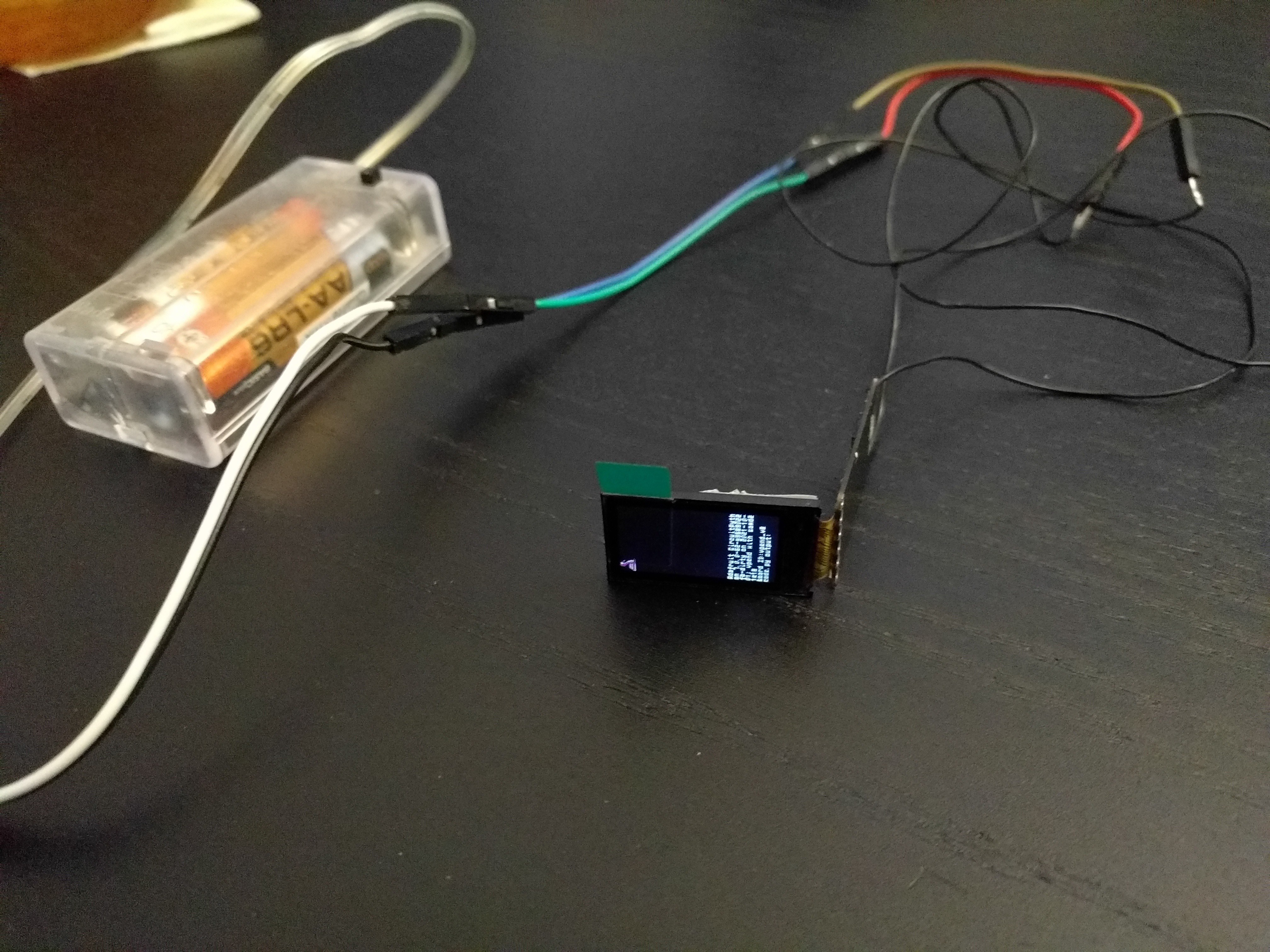I had a friend visiting over the weekend, and they were interested in this project, so we sat down together and made some progress with it. I assembled a second unit, flashed the usual bootloader to it, and started to work on the CircuitPython firmware with the displayio library included.
Right away I ran into a stumbling block: displayio is too large to fit on the SAMD21 flash by default, even with all the unneeded modules disabled. Fortunately I had a similar problem with #PewPew OLED before, and I knew that reducing the size of the filesystem from 64kB to 48kB solves that problem.
Next problem took us some more time to resolve. I copied the display initialization code from #PewPew M4, since both displays use the same ST7735, they just differ in size. But on the pendant this code was crashing the whole firmware. It took me some time to figure out that the PA10 pin I used as MOSI for the display can't in fact be used as MOSI, despite what my notes say. Instead, pin PA11 should be used. So we cut the trace, bodged the connection to one pin to the right, and this time got working firmware. But unfortunately with non-working display still.
Two days later I finally figured out what was wrong. I typed the value I was writing to MADCTL register as binary value, with "0b" at the beginning, but I forgot this is C, not Python, and that means something else. After writing that in hex with "0x" the display magically started working:

The next step is to write the code for decoding GIF images. I already have working code for CircuitPython, so I tried that. Unfortunately (but predictably), I ran out of memory. So next, I need to figure a way of sending the data straight to the display, without buffering it first in RAM. I might need to use a C library for reading that GIF file for this, we will see.
 deʃhipu
deʃhipu
Discussions
Become a Hackaday.io Member
Create an account to leave a comment. Already have an account? Log In.